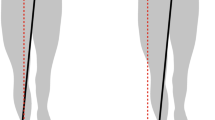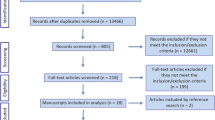Abstract
We used the framework of motor program adaptability to examine how unilateral above-knee (AK) or below-knee (BK) amputee subjects organize the global and local biomechanical processes of generation of the propulsive forces during gait initiation to overcome the segmental and neuro-muscular asymmetry. The organization of the global biomechanical process refers to the kinematics behavior of the couple center of foot pressure (CoP) and center of mass (CoM); the organization of the local biomechanical process refers to the propulsive forces generated by the prosthetic or intact limb during the anticipatory postural adjustment phase and the step execution phase. Specifically, we examined: i) the strategy to regulate the progression velocity, i.e., to maintain it comparably when the leading limb changed from the prosthetic limb to the intact limb; and ii) the strategy to modulate the progression velocity, i.e., to increase it when gait was initiated with the prosthetic limb vs. intact limb. The kinematics of the CoM and CoP in the amputees showed the same global biomechanical organization that is typically observed in able-bodied subjects, i.e., the production of the forward disequilibrium torque was obtained by a backward shift of the CoP, followed by a forward acceleration of the CoM. However, gait initiation was achieved by using a different local strategy depending on which limb was used to initiate the step. For the regulation of the CoM progression velocity, when the gait was initiated with the intact limb, the slope of the progression velocity during the anticipatory postural adjustment phase (APA) was steeper and lasted longer, the step execution duration was shorter, and the variation of the CoM speed was lower. In other words, to regulate the speed of progression, the amputee subjects controlled the spatial and temporal parameters of the propulsive forces. In the modulation of the CoM progression velocity, when the gait was initiated with the intact limb, the amputees controlled only the intensity of the propulsive forces during both the APA and step execution phases. In contrast, when the gait was initiated with the prosthetic limb, the modulation resulted mainly from the propulsive forces generated during the step execution phase. These different strategies are discussed in terms of the subject’s capacity to adapt the motor program for gait initiation to new constraints.







Similar content being viewed by others
References
Belenkii YY, Gurnfinkel VS, Paltev YI (1967) Element of control of voluntary movement. Biofizika 12:135–141
Bernstein NA (1967) The co-ordination and regulation of the movements. Oxford Pergamon Press
Bouisset S, Zattara M (1981) A sequence of postural movement precedes voluntary movement. Neurosci Lett 22:263–270
Bouisset S, Zattara M (1983) Anticipatory postural movements related to a voluntary movement. In: Space physiology. Cepadues Pubs, pp 137–141
Brenière Y (1996) Why we walk the way we do. J Mot Behav 28:291–298
Brenière Y, Do MC (1986) When and how does steady state gait movement induced from upright posture begin? J Biomechanics 19:1035–1040
Brenière Y, Do MC, Sanchez J (1981) A biomechanical study of the gait initiation process. J Biophys Med Nucl 5:197–205
Brenière Y, Do MC, Bouisset S (1987) Are dynamic phenomena prior to stepping essential to walking? J Mot Behav 19:62–76
Buckley JC, O’Driscoll D, Bennett SJ (2002) Postural sway and active balance performance in highly active lower-limb amputees. Am J Phys Med Rehabil 81:13–20
Burleigh-Jacobs A, Horak FB, Nutt JG, Obeso JA (1997) Step initiation in Parkinson’s disease: influence of levodopa and external sensory triggers. Mov Disord 12:206–215
Cavagna GA, Heglund NC, Taylor CR (1977) Mechanical work in terrestrial locomotion: two basis mechanisms for minimising energy expenditure. Am J Physiol 233:243–261
Cook T, Cozzens B (1976) Human solutions for locomotion: the initiation of gait. In: Herman RM, Grillner S, Stein PSG, Stuart DG (eds) Neural control of locomotion. Plenum, New York, pp 65–76
Crenna P, Frigo C (1991) A motor programme for the initiation of forward-oriented movements in humans. J Physiol 437:635–653
Dietrich G, Brenière Y, Do MC (1994) Organization of local anticipatory movements in single step initiation. Hum Mov Sci 13:195–210
Dillingham TR, Lehmann JF, Price R (1992) Effect of lower limb on body propulsion. Arch Phys Med Rehabil 73:647–651
Gitter A, Czerniecki J, Meinders M (1997) Effect of prosthetic mass on swing phase work during above-knee amputee ambulation. Am J Phys Rehabil 76:114–121
Hermodsson Y, Ekdahl C, Persson BM, Roxendal G (1994) Standing balance in trans-tibial amputees following vascular disease or trauma: a comparative study with healthy subjects. Prosthet Orthot Int 18:150–158
Hesse S, Reiter F, Jahnke M, Dawson M (1997) Asymmetry of gait initiation in hemiparetic stroke subjects. Arch Phys Med Rehabil 78:719–724
Kardar EE, Maxwell JP, Stins J, Costall A (2002) Drifting towards a diffuse control model of exploratory motor learning: a comparison of global and within-trial performance measures. Biol Cybern 87:1–9
Kavounoudias A, Gilhodes JC, Roll R, Roll JP (1999) From balance regulation to body orientation: proprioceptive information processing. Exp Brain Res 124:80–88
Kavounoudias A, Roll R, Roll JP (2001) Foot sole and ankle muscle input contribute jointly to human erect posture regulation. J Physiol 532:869–878
Keele SW, Cohen A, Ivry RI (1990) Motor programs: concepts and issues. In: Jeannerod M (ed) Attention and performance, vol. XIII. Erlbaum, London
Isakov E, Keren O, Benjuya N (2000) Trans-tibial amputee gait: time-distance parameters and EMG activity. Prosthet Orthot Int 24:216–220
Latash M (2000) There is no motor redundancy in human movements. There is motor abundance. Motor Control 4:259–261
Lepers R, Brenière Y (1995) The role of anticipatory postural adjustment and gravity in gait initiation. Exp Brain Res 107:118–124
Mann RA, Hagy JL, White V, Liddell D (1979) The initiation of gait. J Bone Joint Surg 61:232–239
McGibbon C, Krebs D (2001) Age-related changes in trunk coordination and energy transfer during gait. J Neurophysiol 85:1923–1931
Meinder M, Gitter A, Czerniecki JM (1998) The role of the plantar muscle work during walking. Scand J Rehabil Med 30:30–46
Michel V, Do M-C (2002) Are stance ankle plantar flexor muscles necessary to generate propulsive force during human gait initiation? Neurosci Lett 325:139–143
Nielsen JB, Sinkjaer T (2002) Afferent feedback in the control of human gait. J Electromyogr Kinesiol 12:213–217
Nissan M, Whittle MW (1990) Initiation of gait in normal subjects: a preliminary study. J Biomed Eng 12:165–171
Patchay S, Gahery Y, Serratrice G (1997) Gait initiation and impairments of ground reaction forces as illustrated in old age by ‘La marche a petits pas’. Neurosci Lett 236:143–146
Perry S, McIllroy WE, Maki BE (2000) The role of plantar cutaneous mechanoreceptors in the control of compensatory stepping reactions evoked by unpredictable, multi-directional perturbation. Brain Research 877:401–406
Scholz JP, Schöner G, Latash ML (2000) Identifying the control structure of multijoint coordination during pistol shooting. Exp Brain Res 135:382–404
Tang PG, Woollacott MH, Chong RK (1998) Control of reactive balance adjustments in perturbed human walking: roles of proximal and distal postural muscle activity. Exp Brain Res 119:141–152
Thoumie P, Do MC (1996) Changes in motor activity and biomechanics during balance recovery following cutaneous and muscular deafferentation. Exp Brain Res 110:289–297
Thorstensson A, Nilsson J, Carlson H, Zomlefer MR (1984) Trunk movements in human locomotion. Acta Physiol Scand 121:9–22
Viton JM, Timsit M, Mesure S, Massion J, Franceschi JP, Delarque A (2000) Asymmetry of gait initiation in patients with unilateral knee arthritis. Arch Phys Med Rehabil 81:194–200
Whittlesey SN, van Emmerik RE, Hamill J (2000) The swing phase of human walking is not a passive movement. Motor Control 4:273–292
Winter DA, Patla AE, Frank JS (1990) Assessment of balance control in humans. Med Prog Technol 16:31–51
Yamashita T, Katoh R (1976) Moving pattern of point application of vertical resultant force during level walking. J Biomech 9:93–99
Yiou E, Do MC (2001) In a complex sequential movement, what component of the motor program is improved with intensive practice, sequence timing or ensemble motor learning? Exp Brain Res 137:197–204
Zattara M, Bouisset S (1983) Influence de la vitesse d’exécution du mouvement volontaire sur les accélérations locales anticipatrices. VIIIe Congrès de la Société de Biomécanique, Lyon, pp 113–114
Acknowledgements
We thank Dr. P. Sautreuil and Prof. Ph. Thoumie for helping to recruit subjects.
Author information
Authors and Affiliations
Corresponding author
Additional information
An erratum to this article can be found at http://dx.doi.org/10.1007/s00221-004-2001-3
Rights and permissions
About this article
Cite this article
Michel, V., Chong, R.K.Y. The strategies to regulate and to modulate the propulsive forces during gait initiation in lower limb amputees. Exp Brain Res 158, 356–365 (2004). https://doi.org/10.1007/s00221-004-1908-z
Received:
Accepted:
Published:
Issue Date:
DOI: https://doi.org/10.1007/s00221-004-1908-z




